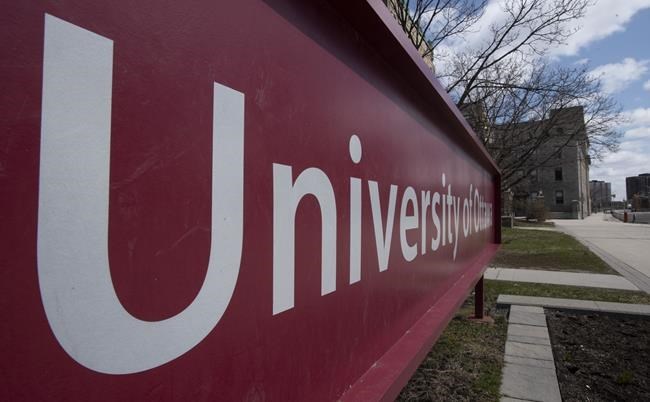OTTAWA ŌĆö Parents across the country are getting ready to tap into registered education savings plans to help pay for their children's post-secondary schooling this fall.
After years of saving, the time has come to start spending those nest eggs.
Andrew Craig and his wife opened an RESP account for their eldest daughter when she was two. When the time came last year to start spending the money there was about $24,000 in the account.
The bills came fast and furious as she began making plans to move from Guelph, Ont., to study physics at the University of Ottawa last fall.
"She really wanted to live in residence and with residence you don't have a whole lot of options," said Craig, a teacher and artist.
"If you're going into residence, then you have to buy their meal plan. If you're buying their meal plan, you're buying a five-day or a six-day or a seven-day and they're not that much different in price. Suffice it to say that we burned through that money in a year without even blinking."
Christine Van Cauwenberghe, head of financial planning at IG Wealth Management, says before you start withdrawing that RESP money you should be lowering the risk level of your portfolio because you don't want a surprise crash in the market when you need to start spending the money.
"Even the year before, I'd say one thing you need to start thinking about is ratcheting down the risk level of your portfolio and moving at least part of the money into a more conservative portfolio," she said.
Once your student is enrolled in a qualifying full- or part-time program, you can begin withdrawing from the account.
When taking money out of an RESP, the account holder must designate it as one of two kinds of withdrawal: your original contribution money, or educational assistance payments, which includes investment gains as well as benefits such as the sa╣·╝╩┤½├Į Learning Bond or sa╣·╝╩┤½├Į Education Savings Grant.
There are no limitations on the withdrawal of the amounts that you contributed to the plan. However, there are limits to educational assistance payments during the first 13 weeks of post-secondary studies.┬Ā
Ottawa raised that limit this year on educational assistance payments for students enrolled in a full-time program to $8,000 from $5,000. The limit for part-time students was increased to $4,000 from $2,500. Once the first 13 weeks have passed, there are no limits on the educational assistance payments that may be withdrawn by a student.┬Ā
Van Cauwenberghe said it is important to keep in mind under which category you are making your withdrawal because of the tax consequences.┬Ā
Plan contributions are not taxed when they are taken out, but the educational assistance payments are taxed as income ŌĆö for the student, not the RESP account holder. However, because it is likely that a student will be in a lower tax bracket and will have tuition tax credits, the hope is they won't have to pay much or any tax on the taxable portion of their RESP withdrawals.
But if they worked for a full year before starting their program or have other sources of income, they could face a higher tax bill.
"Depending on how big (the payments) are, it's possible that, you know, the student could pay more in tax if you take out large lump sums in fewer years at the beginning," Van Cauwenberghe said.
Julie Sehl, a regional vice-president at BMO Financial Group, stressed the importance of talking to your student early about their RESP money and budgeting to help set them up for success.
In the end, the money is an RESP is meant to last for a very specific purpose, so it is important to plan accordingly, she said.
"When it comes time where you give a 17-year-old ... $20,000, are they going to blow it and then halfway through the year have no money left, that's a really difficult situation to be in," she said.
Sehl said the most common mistake parents make is underestimating the amount a student is going to need.
"When I went to school several years ago, the cost was a lot lower than it is now," she said. It's important to start talking to your children about education savings when they are around 13 or 14, she added.┬Ā
"Start having discussions with them about how much they are saving, what is that looking like, and is it going to pay for all of their schooling down the line."
Craig's message to any other parents looking to set up RESP accounts for their kids is that whatever you think it is going to cost, it is going to be more.
"It's going to be way more than you think it is by the time they get to be the age where you redeem it," he said.
This report by The Canadian Press was first published Aug. 17, 2023.
Craig Wong, The Canadian Press



